What you’ll learn:
- Semaglutide and tirzepatide medications both help regulate appetite and support weight loss, but tirzepatide may lead to greater weight loss due to its dual action on GLP-1 and GIP receptors.
- Choosing between these medications depends on factors like cost, insurance coverage, effectiveness, and how well you tolerate side effects.
- While both medications are powerful tools for weight management, they work best when combined with long-term lifestyle changes.
If you’ve been paying attention to the weight loss medication boom, you’ve probably heard of Ozempic® and maybe even Wegovy®, Mounjaro®, and Zepbound®. These four medications are the big players in a class of medications called GLP-1 receptor agonists. Originally developed to treat type 2 diabetes, these medications were found to be highly effective for weight loss, leading to their widespread off-label use and, in some cases, FDA approval for weight management.
While several GLP-1 medications exist, semaglutide (found in Ozempic® and Wegovy®) and tirzepatide (found in Mounjaro® and Zepbound®) have proven to be the most effective for weight loss. Clinical studies show that people taking semaglutide can lose up to 15% of their body weight, while those taking tirzepatide have seen losses of up to 21% over a similar period.
But weight loss isn’t the only factor to consider when looking for a medication to help with weight loss. Side effects, insurance coverage, and cost also play a major role in choosing the right medication. We’ll break down how these drugs compare, what they cost, and what to expect from each so that you can make the best choice for your health goals.
Semaglutide vs. Tirzepatide: How do they work?
To understand how semaglutide and tirzepatide work, it helps to look at how your body naturally regulates appetite, digestion, and metabolism. Both medications act on GLP-1 receptors, which are found throughout the body, including in the brain, stomach, intestines, pancreas, and even fat cells. These receptors respond to GLP-1, which plays a key role in appetite, how fast food leaves the stomach, and blood sugar regulation.
When you eat, your body naturally releases GLP-1, which slows down digestion and tells your brain that you’re full. GLP-1 medications like semaglutide and tirzepatide mimic the GLP-1 hormone, enhancing its effects to help regulate blood sugar and curb hunger, leading to lower calorie intake and weight loss.
Where tirzepatide differs from semaglutide is that it also activates another hormone receptor: GIP (glucose-dependent insulinotropic polypeptide). GIP works alongside GLP-1 to stimulate insulin release, but it also has additional effects, like promoting fat metabolism and energy balance. Studies suggest that targeting both GLP-1 and GIP receptors together enhances insulin sensitivity, reduces fat accumulation, and may improve metabolic flexibility—all of which could contribute to greater weight loss compared to GLP-1 activation alone.
What are the similarities?
Semaglutide and tirzepatide work in similar ways to help with weight loss and blood sugar control. Here’s what else they have in common:
- You (generally) take them the same way. All forms of tirzepatide and most forms of semaglutide are taken as once-weekly injections in the upper arm, thigh, or stomach. There is a pill form of semaglutide called Rybelsus® that is mostly used for diabetes control, not weight loss.
- They require step-up dosing. Medications with tirzepatide and semaglutide start at a low dose and increase over time to reduce side effects and keep you losing steady weight.
- All have similar side effects. The most common issues include nausea, vomiting, diarrhea, and constipation, especially in the early weeks or after increasing the dose.
What are the differences?
While semaglutide and tirzepatide have a lot of similarities, each medication that contains these active ingredients has differences that might make one or another better for you. We’ll go through cost, insurance coverage, effectiveness, FDA-approved uses, and the manufacturers so you can see the full picture. Here’s a breakdown:
| Medication | Ozempic® | Wegovy® | Rybelsus® | Mounjaro® | Zepbound® |
|---|---|---|---|---|---|
| Active ingredient | Semaglutide | Semaglutide | Semaglutide | Tirzepatide | Tirzepatide |
| Manufacturer | Novo Nordisk | Novo Nordisk | Novo Nordisk | Eli Lilly | Eli Lilly |
| FDA approval and uses | Type 2 diabetes (off-label for weight loss) | Weight loss and preventing heart disease | Type 2 diabetes (off-label for weight loss) | Type 2 diabetes (off-label for weight loss) | Weight loss and obstructive sleep apnea (OSA) |
| Cost without insurance (monthly) | $998 | $1,350 NovoCare® Pharmacy: $499 (all doses) | $998 | $1,080 | Pens: $1,087 Vials: $349 (2.5 mg) $499 (5 mg, 7.5 mg, 10 mg) |
| Dosing | 0.25 mg 0.5 mg 1 mg 2 mg | 0.25 mg 0.5 mg 1 mg 1.7 mg 2.4 mg | 3 mg 7 mg 14 mg | 2.5 mg 5 mg 7.5 mg 10 mg 12.5 mg 15 mg | Pens and vials: 2.5 mg 5 mg 7.5 mg 10 mg Pens only: 12.5 mg 15 mg |
| Insurance coverage | Occasionally covered for diabetes, but rarely for weight loss. Learn more about the cost of Ozempic®. | Rarely covered for weight loss. Learn more about the cost of Wegovy®. | Occasionally covered for diabetes, but rarely for weight loss. Learn more about the cost of Rybelsus®. | Occasionally covered for diabetes, but rarely for weight loss. Learn more about the cost of Mounjaro®. | Rarely covered for weight loss. Learn more about the cost of Zepbound®. |
Can you switch between semaglutide and tirzepatide?
Yes, you can switch between semaglutide (Ozempic®, Wegovy®) and tirzepatide (Mounjaro®, Zepbound®), but it should always be done under the guidance of a doctor. Transitioning from one to the other requires careful dose adjustments to minimize side effects and ensure a smooth transition. Since these medications work slightly differently, your body may respond differently to each.
Why switch?
People switch between semaglutide and tirzepatide for several reasons:
- Weight loss expectations – If someone isn’t experiencing the weight loss they anticipated with one medication, they may switch to see if their body responds better to the other. Studies suggest tirzepatide may lead to greater weight loss for some people, but again, this depends on the person and lifestyle changes.
- Managing side effects – While both medications can cause nausea, vomiting, and gastrointestinal discomfort, some people find that one is more tolerable than the other.
- Cost and insurance coverage – Availability and insurance coverage can be a major factor. Some insurance plans cover one medication but not the other, leading people to switch based on affordability.
How to switch safely between tirzepatide and semaglutide
Switching between these medications can be beneficial, but it’s important to do so strategically to get the best results with minimal side effects. The first rule is: Never stop or start these medications without medical guidance. Your provider will evaluate your current dose and any side effects before making a transition plan. The doses are not directly interchangeable. Typically, you will stop one medication and wait one week before starting the new one.
Semaglutide vs. tirzepatide: Which is better for weight loss?
Choosing between semaglutide and tirzepatide comes down to more than just how much weight you can lose. How your body responds, potential side effects, and cost all play a role. Some people tolerate one medication better than the other or experience fewer side effects. Insurance coverage can be a major deciding factor—if one is covered while the other isn’t, cost may ultimately determine your choice.
How much weight can you lose on semaglutide vs tirzepatide?
Studies suggest that tirzepatide-based medication may lead to greater weight loss than semaglutide-based medication. Let’s take a look at the long-term studies:
- Semaglutide: In a 68-week study, people taking semaglutide lost an average of 15% of their body weight. For a 250-pound person, this would mean a weight loss of about 37.5 pounds.
- Tirzepatide: In a 72-week study, people taking tirzepatide lost an average of 21% of their body weight. For a 250-pound person, this would translate to about 52.5 pounds.
The important thing to keep in mind is that while these medications can help you lose weight, results vary based on individual factors, dosage, and lifestyle changes. People who improve their eating habits and exercise regularly alongside medication may experience even better results. Those who don’t make lifestyle changes might see less weight loss than the averages reported in studies.
How long before changes become noticeable?
Many people notice weight loss within the first few weeks of starting these medications. Here’s a look at what studies on tirzepatide and semaglutide say you can expect in terms of average body weight lost:
After 3 months:
- Tirzepatide: 6%
- Semaglutide: 4%
After 6 months:
- Tirzepatide: 10%
- Semaglutide: 6%
After 1 year:
- Tirzepatide: 15%
- Semaglutide: 8%
While everyone has a different experience, results depend a lot on your diet and exercise habits, as well as underlying health issues. Your doctor will adjust your dose to keep you losing steady weight as tolerated.
Who is can take semaglutide or tirzepatide for weight loss?
While your doctor will have the final say in whether one of these medications is right for you, eligibility for weight loss is based primarily on body mass index (BMI) and weight-related health conditions. To take these medications for weight loss, you should have a:
- BMI of 30 or higher
or
- BMI of 27 or higher with at least one weight-related health condition like high blood pressure or high cholesterol.
Who shouldn’t take semaglutide or tirzepatide?
Semaglutide and tirzepatide are not right for everyone, particularly if you have a personal or family history of the following conditions:
- You or a family member has had medullary thyroid carcinoma (MTC) or multiple endocrine neoplasia syndrome type 2 (MEN 2).
- You have had a serious allergic reaction to semaglutide, tirzepatide, or any of their ingredients.
Before starting semaglutide or tirzepatide, let your provider know if you:
- Have or have had pancreatitis or gallbladder disease, including gallstones.
- Have type 2 diabetes with a history of diabetic retinopathy.
- Have or have had depression, suicidal thoughts, or other mental health concerns.
You shouldn’t take semaglutide or tirzepatide if you are
- Pregnant or planning to become pregnant
- Breastfeeding or planning to breastfeed
For more detailed safety information, refer to the safety information for Zepbound®, Wegovy®, Ozempic®, and Mounjaro®, or consult a healthcare provider.
Rx weight loss, the right way, with Noom
Get access to prescription weight loss medication with Noom.If you take tirzepatide or semaglutide to lose weight, will you need to keep taking them forever?
People typically need to take semaglutide or tirzepatide for several months to experience significant weight loss. This doesn’t mean you’ll need to stay on the medication forever. How long you continue depends on your results, lifestyle changes, how well you tolerate the medication, and overall health goals.
Will you regain weight after you stop?
Both medications help regulate appetite and blood sugar, but they don’t permanently reset how your body manages weight. If you stop taking them, hunger and cravings may return, increasing the risk of weight regain. Some people maintain their results, while others regain weight, especially if healthy habits aren’t in place. Learn more about what happens when you stop GLP-1s.
How can you maintain weight loss?
Gradually tapering off the medication may help prevent rapid weight regain. One study found that people who slowly reduced their semaglutide dose maintained a stable weight for 26 weeks. Pairing medication with sustainable lifestyle habits, like balanced eating and regular movement, is key. A structured approach, such as Noom’s behavior change program, can help maintain long-term results.
Can you restart tirzepatide or semaglutide?
If weight regain becomes a concern, restarting medication may be an option. Some people transition to a lower maintenance dose instead of stopping completely. If you’re considering making a change, talk to your doctor. Learn more about stopping and restarting GLP-1s.
These medications work best when combined with long-term behavior changes. The goal isn’t just to lose weight but to maintain it in a sustainable way—whether you stay on medication or not. Learn more about staying on a GLP-1 long-term.
Semaglutide vs. Tirzepatide: Dosage and administration
Most versions of semaglutide and tirzepatide are taken as once-weekly injections you give yourself. (Rybelsus® is taken as a daily pill.) Though that sounds tricky at first, most people find the process easy and relatively painless. They are both injected under the skin in the abdomen, thigh, or upper arm on your chosen day each week. The needle is tiny, and most people report only minor discomfort when injecting.
Ozempic®, Wegovy®, and Mounjaro® come as prefilled pens, though Zepbound® also comes in a vial and syringe format. The difference is with prefilled pens, you push a button, and the correct dose is injected. With the vial and syringe, you will draw the medication into the syringe through the single-use vial and then inject the medication. All injectable versions should be refrigerated to maintain freshness, and Rybelsus® should be kept at room temperature. Here’s a look at the available doses:
| Active ingredient | Brand name | Available doses | How it’s taken |
|---|---|---|---|
| Semaglutide | Ozempic® | 0.25 mg, 0.5 mg, 1 mg, 2 mg | Weekly injection |
| Semaglutide | Wegovy® | 0.25 mg, 0.5 mg, 1 mg, 1.7 mg, 2.4 mg | Weekly injection |
| Semaglutide | Rybelsus® | 3 mg, 7 mg, 14 mg | Daily pill |
| Tirzepatide | Mounjaro® | 2.5 mg, 5 mg, 7.5 mg, 10 mg, 12.5 mg, 15 mg | Weekly injection |
| Tirzepatide | Zepbound® | 2.5 mg, 5 mg, 7.5 mg, 10 mg (pens and vials) 12.5 mg, 15 mg (pens only) | Weekly injection |
Always follow your doctor’s instructions and refer to the medication’s prescribing information for detailed dosage and administration guidelines.
Tirzepatide vs. semaglutide: Costs
The cost of tirzepatide medications (Zepbound®, Mounjaro®) and semaglutide medications (Wegovy®, Ozempic®, Rybelsus®) varies based on insurance coverage, pharmacy pricing, and available discount programs. Without insurance, these medications can cost over $1,000 per month, making affordability a major factor when considering treatment. Let’s break it down.
Semaglutide
| Brand name | Available dosages | Cost (monthly) |
|---|---|---|
| Ozempic® | 0.25 mg, 0.5 mg, 1 mg, 2 mg | $1,350 Learn more about the cost of Wegovy®. |
| Wegovy® | 0.25 mg, 0.5 mg, 1 mg, 1.7 mg, 2.4 mg | $1,350 NovoCare® Pharmacy; $499. Learn more about the cost of Wegovy®. |
| Rybelsus® | 3 mg, 7 mg, 14 mg | $998 Learn more about the cost of Rybelsus®. |
Tirzepatide
| Brand Name | Available dosages | Cost (monthly) |
|---|---|---|
| Mounjaro® | 2.5 mg, 5 mg, 7.5 mg, 10 mg, 12.5 mg, 15 mg | $ 1,080 Learn more about the cost of Mounjaro®. |
| Zepbound® | 2.5 mg, 5 mg, 7.5 mg, 10 mg (pens and vials) 12.5 mg, 15 mg (pens only) | $1,087 (pens) $349 (2.5 mg), $499 (5 mg, 7.5 mg,10 mg) (vials) Learn more about the cost of Zepbound®. |
Does insurance cover tirzepatide or semaglutide for weight loss?
As noted above, insurance coverage can vary for these medications and largely depends on what it is prescribed for and your coverage. Here’s a breakdown:
- Ozempic®, Rybelsus®, and Mounjaro® might be covered for diabetes, but rarely for weight loss.
- Wegovy® and Zepbound® are FDA-approved for weight loss, but many private insurance plans don’t cover weight loss medications.
What about Medicare?
Medicare coverage depends on the medication and its use. Again, a medication prescribed for diabetes management is more likely to be covered.
- Ozempic®, Rybelsus®, and Mounjaro® might be covered under Medicare Part D if prescribed for diabetes.
- Wegovy® and Zepbound® are typically not covered because Medicare does not cover weight loss medications, though exceptions may exist. Wegovy® can also be prescribed to treat heart disease, and Zepbound® can be prescribed to treat OSA. Talk to your insurance provider to see if they are covered in these cases.
The Inflation Reduction Act will limit annual out-of-pocket drug costs to $2,000 for Medicare Part D enrollees, which may help lower expenses for those who qualify. Since coverage policies can change, it’s best to check with your Medicare provider to confirm the latest eligibility details.
Tirzepatide vs. semaglutide: Side effects
Both tirzepatide and semaglutide can cause side effects ranging from mild discomfort to more serious complications. Since these medications work in similar ways, they share many of the same potential side effects, though the frequency and intensity can vary from person to person.
Your body also needs time to adjust. Many people experience mild gastrointestinal issues when they first start or increase their dose, with nausea being the most common complaint. These symptoms often improve over time as your body adapts.
There are also serious risks associated with GLP-1 medications that you should be aware of before starting treatment. We’ll go through those below.
Common side effects
Most people find that the side effects they experience are pretty mild to moderate, especially when they’re just starting out or moving up to a higher dose. Here’s what you might expect:
- Nausea
- Vomiting
- Diarrhea or constipation
- Stomach pain
- Fatigue
These symptoms usually improve as your body gets used to the medication. Small changes to your diet, staying well-hydrated, and gradual dose increases can help.
Serious side effects and warnings
While tirzepatide and semaglutide are generally safe, there are some serious risks. It’s important to follow your doctor’s instructions and contact them if you have any concerns.
Here are some signs that you should seek immediate medical help:
- Pancreatitis: Symptoms include severe abdominal pain that radiates to your back, with or without vomiting.
- Vision changes: If you notice any sudden changes in your vision while taking any, get immediate medical attention.
- Low blood sugar (hypoglycemia): Low blood sugar is most likely in people who are also taking medications for diabetes. Symptoms include dizziness, shakiness, blurred vision, and a fast heartbeat.
- Kidney problems: Diarrhea, nausea, and vomiting can cause dehydration and worsen kidney issues. Go to the ER if you experience decreased urination, swelling in the ankles or legs, fatigue, or shortness of breath.
- Gallbladder problems: Symptoms include upper abdominal pain, fever, jaundice, or clay-colored stools.
- Allergic reaction: Symptoms include swelling of the face, lips, tongue, or throat, difficulty breathing or swallowing, or a rapid heartbeat. Get immediate medical attention if you’re having an allergic reaction.
- Thyroid tumors or cancer: Be alert for a lump or swelling in the neck, difficulty swallowing, or shortness of breath. (This connection has only been established in animal studies.)
For detailed safety information and a full list of potential side effects, review the safety information for Zepbound®, Wegovy®, Ozempic®, and Mounjaro®. If you notice any concerning symptoms, reach out to your healthcare provider as soon as possible.
Less common side effects
Some side effects have been widely reported but are not officially listed by manufacturers. These are generally attributed to rapid weight loss and include these symptoms:
- Muscle loss – Losing weight too quickly can result in loss of muscle mass. This can also cause what’s known as “Ozempic® face,” the name given to a gaunt or aged appearance due to rapid weight loss. The best thing you can do to prevent muscle loss is to lose weight gradually (1 to 2 pounds per week), incorporate strength training into your workout routine, and eat enough protein.
- Hair thinning or shedding – Some people report increased hair loss or thinning, likely due to nutritional changes from rapid weight loss. Again, maintaining nutrition while losing weight is important,
- Feeling cold – A drop in body temperature regulation is common with significant weight loss. Besides quick fixes like adding a layer or turning up your heat, make sure you’re eating enough nutrient-rich foods to help your body keep itself warm.
Tirzepatide vs. semaglutide Which is safer?
Again, both semaglutide and tirzepatide are considered safe when you take them as directed. Studies show that the benefits of taking these medications to reduce BMI and treat other health conditions outweigh their risks in many cases.
Managing side effects and building sustainable habits is key. If you get your medication through Noom Med, your clinician will help you work through side effects. You’ll also get a diet and exercise plan to help improve your health while taking the medication. If you get your medication through your personal doctor, use Noom’s GLP-1 Companion to help you make lifestyle changes and maintain long-term success.
Tirzepatide vs. semaglutide: Which is right for me?
Deciding between semaglutide (Wegovy®, Ozempic®, Rybelsus®) and tirzepatide (Zepbound®, Mounjaro®) comes down to cost, effectiveness, and personal preference. Both aid weight loss by reducing appetite, slowing digestion, and regulating blood sugar, but tirzepatide may offer slightly greater weight loss due to its dual action on GLP-1 and GIP receptors.
Cost
As you know, semaglutide and tirzepatide medications are unlikely to be covered by insurance. Since you’ll likely be on them for several months, you’ll have to choose the one that works for your budget. Here’s a recap of the prices you can expect to see, though again, they vary based on pharmacy and location.
Semaglutide
- Ozempic®: $998/month. Learn more about the cost of Ozempic®.
- Wegovy®: $1,350/month. If you get your medication directly from the NovoCare® Pharmacy, you will pay $499 for all doses. Learn more about the cost of Wegovy®.
- Rybelsus®: $998/month. Learn more about the cost of Rybelsus®.
Tirzepatide
- Mounjaro®: $1,080/month. Learn more about the cost of Mounjaro®.
- Zepbound®: If you choose to use the Zepbound® auto-injector pens, you’ll pay about $1,087/month. The single-use vials available through Lilly Direct vary in price depending on dose as follows: $349 (2.5 mg) and $499 (5 mg, 7 mg, 10 mg). Learn more about the cost of Zepbound®.
Effectiveness
Tirzepatide will likely cause more weight loss over time compared to semaglutide. Again, people taking semaglutide lost an average of 15% of their body weight. People taking tirzepatide lost an average of 21% of their body weight. With Rybelsus®, the semaglutide pill, people tend to lose less, about 4% of their body weight.
Personal preference and tolerance
Side effects can differ from person to person when using semaglutide or tirzepatide. If one medication causes fewer side effects for you, that may be the better option. If you’re not comfortable with weekly injections, you might consider Rybelsus®, the oral form of semaglutide—though it’s generally less effective for weight loss.
Always discuss your options with a healthcare provider. If you qualify for Noom Med, you’ll be matched with a licensed clinician who can review your health history, talk through your preferences, and prescribe the most appropriate medication if needed.
Alternatives to semaglutide and tirzepatide
While tirzepatide and semaglutide have been highly effective for weight loss, they might not be right for everyone. Cost, individual preferences, or specific health needs might lead you to explore other options.
There are several alternative medications that can effectively support your weight loss journey. These include other medications in the same GLP-1 receptor agonist class as tirzepatide and semaglutide, along with oral medications and other types of injectable treatments.
Other GLP-1 receptor agonists
These medications work similarly to tirzepatide and semaglutide by mimicking hormones that help regulate blood sugar, slow down digestion, and reduce appetite.
Liraglutide
Liraglutide, like semaglutide and tirzepatide, is a GLP-1 receptor agonist, but it requires a daily injection. Liraglutide is generally less effective for weight loss, with studies showing an average loss of around 5 to 7% of body weight.
- Saxenda®: This version of liraglutide is FDA-approved for weight loss and has a list price of $1,349 per month without insurance. Learn more about what Saxenda® costs.
- Victoza®: FDA-approved to manage type 2 diabetes, Victoza® is sometimes prescribed off-label to help with weight loss. Without insurance, it typically costs between $800 and $1,400 per month.
- Generic liraglutide: Generic liraglutide can be a budget-friendly choice, with prices around $470 for a two-pen pack and $704 for a three-pen pack.
Dulaglutide
Trulicity® is a weekly injectable GLP-1 medication, similar to tirzepatide and semaglutide. While effective for blood sugar control, it does not produce the same level of appetite suppression or weight loss as semaglutide or tirzepatide. It’s FDA-approved for type 2 diabetes and is sometimes used off-label for weight loss. Expect to pay around $900-$1,000 per month for Trulicity® if you don’t have insurance coverage. Read more about what Trulicity® costs.
Non-GLP-1 medications
If GLP-1 receptor agonists aren’t suitable for you, there are other medications that can be prescribed to help people lose weight. Let’s take a look at a few popular options.
- Metformin – A first-line treatment for type 2 diabetes, metformin is sometimes prescribed off-label for weight loss. It is generally much cheaper than GLP-1 medications and widely available. People in one study lost an average of about 6% of their body weight over six months while taking metformin.
- Orlistat – This is a fat-blocking medication that prevents the body from absorbing dietary fat. It’s taken three times daily with meals, with costs ranging from $50 to $800 per month, depending on the brand (Xenical® vs. Alli®). Studies show that after one year, people taking Orlistat may lose an average of 10% of their body weight.
- Phentermine – This short-term appetite suppressant is taken once daily and typically costs $27 to $100 per month. One study showed that 45% of the people who took phentermine lost 5% or more of their body weight in a little over a year.
- Diethylpropion – Another short-term appetite suppressant, diethylpropion, is taken one to three times daily and costs between $40 and $85 per month. Studies have shown that in 84 days of treatment, individuals were able to lose up to 10% of their body weight.
- Naltrexone and bupropion (Contrave) – This medication helps reduce appetite and cravings. If purchased through the CurAccess™ Patient Support Program, Contrave® costs $99 per month. Without savings programs, prices range from $600 to $800 per month. In one study, people lost an average of 4% of their weight in 16 weeks.
Unsure of where to start? See if you qualify for Noom Med. Your clinician can go through all of our available options to find the right one for you and prescribe it if needed.
Making the right choice: Semaglutide vs. tirzepatide
When considering semaglutide versus tirzepatide for weight loss, there’s no one-size-fits-all answer. While tirzepatide has shown greater weight loss results in clinical trials, semaglutide is still a highly effective option. The right choice depends on how your body responds, potential side effects, availability, cost, and insurance coverage. Both medications can play a valuable role in weight management, but they work best when paired with long-term lifestyle changes like balanced eating and regular movement.
If you’re thinking about starting or switching between these medications, consulting with a healthcare provider is essential. They can guide you through the process, help manage any side effects, and ensure you’re on the right path to sustainable weight loss. Whether you choose semaglutide or tirzepatide, the key to lasting success isn’t just the medication—it’s also about making choices that support your overall health for the long run.
Note: Ozempic® and Mounjaro® are not FDA-approved to treat obesity or for weight loss.
Why you can trust us
At Noom, we’re committed to providing health information that’s grounded in reliable science and expert review. Our content is created with the support of qualified professionals and based on well-established research from trusted medical and scientific organizations. Learn more about the experts behind our content on our Health Expert Team page.



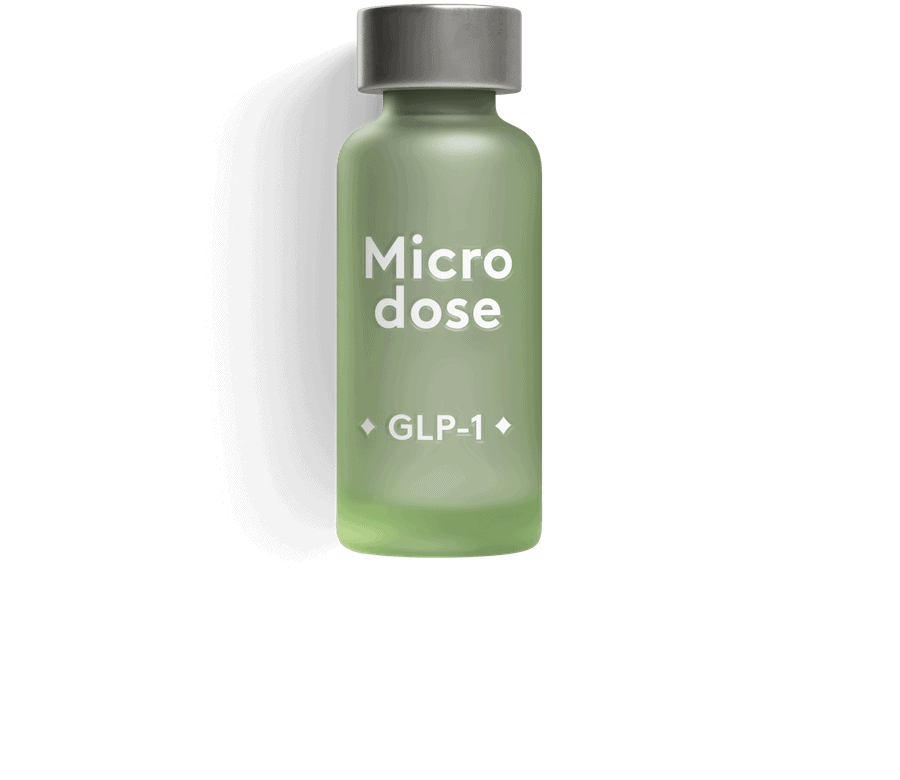
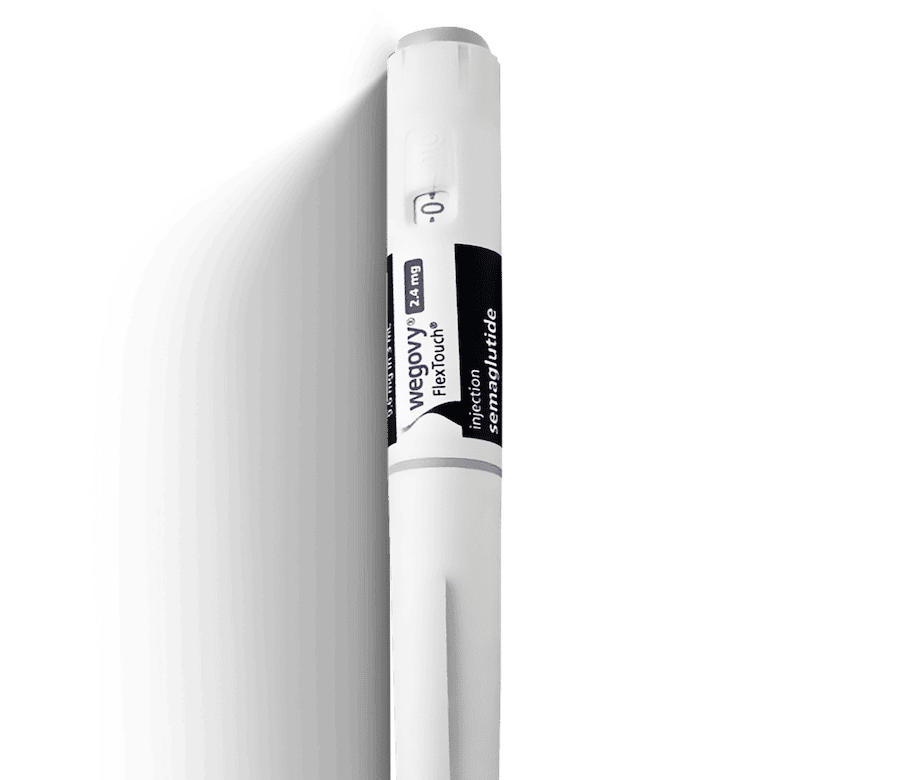

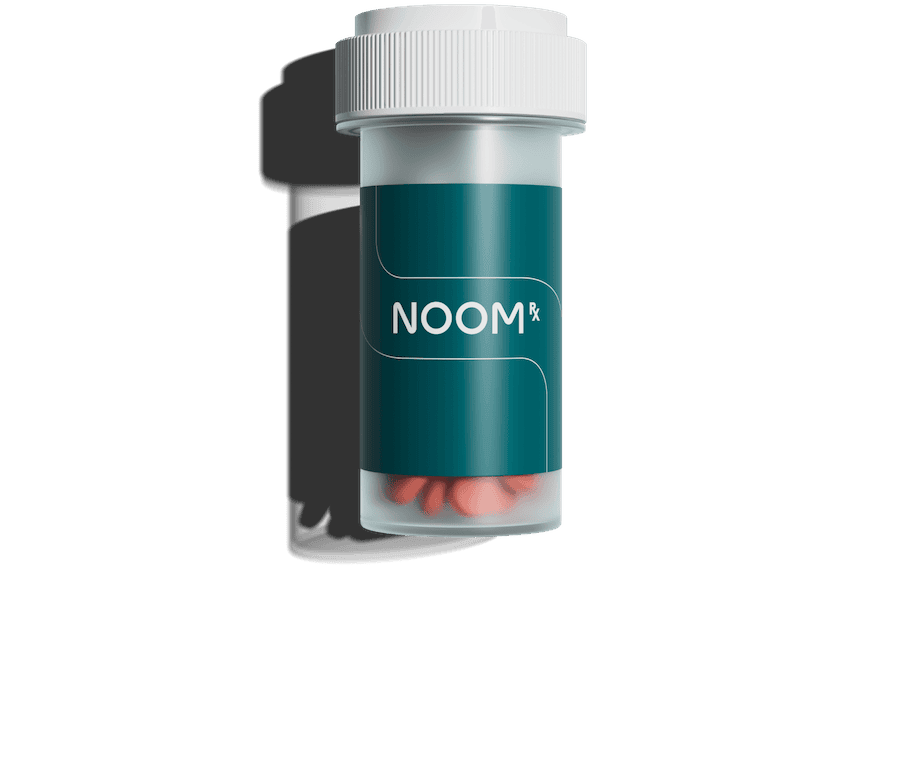

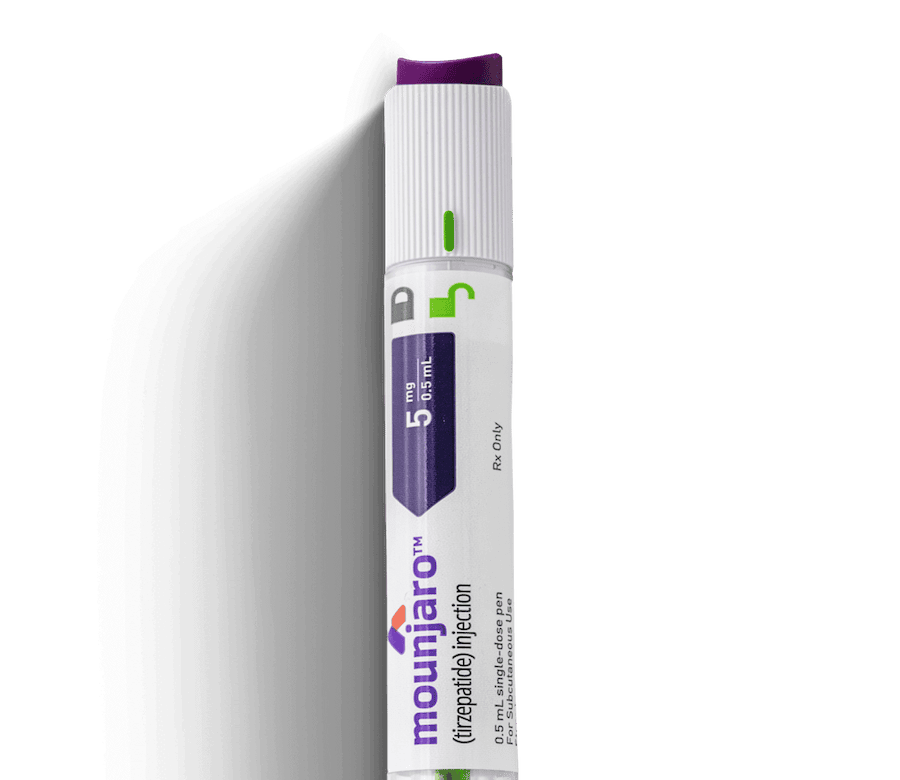
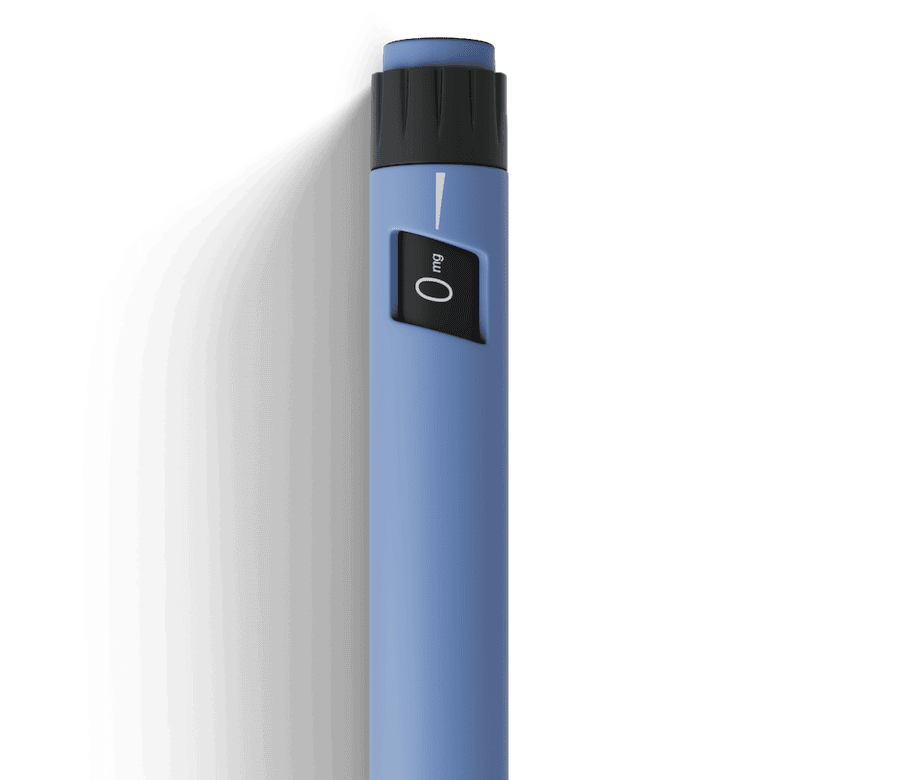







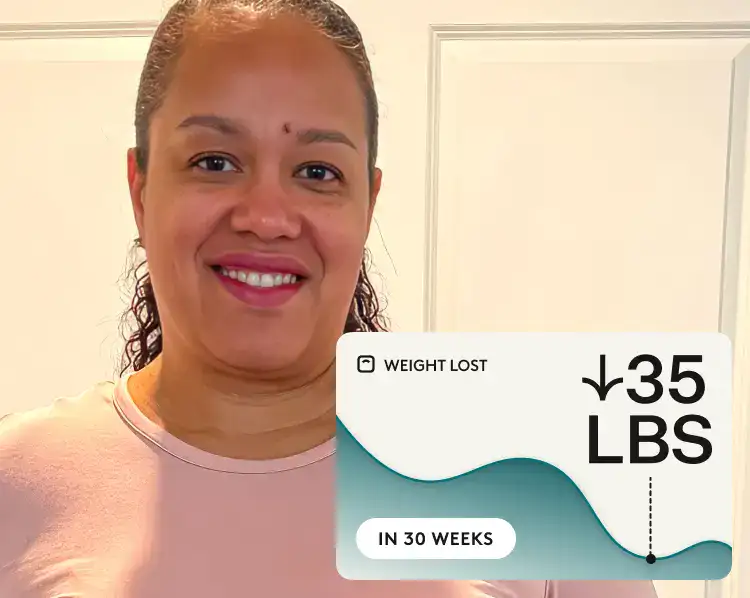
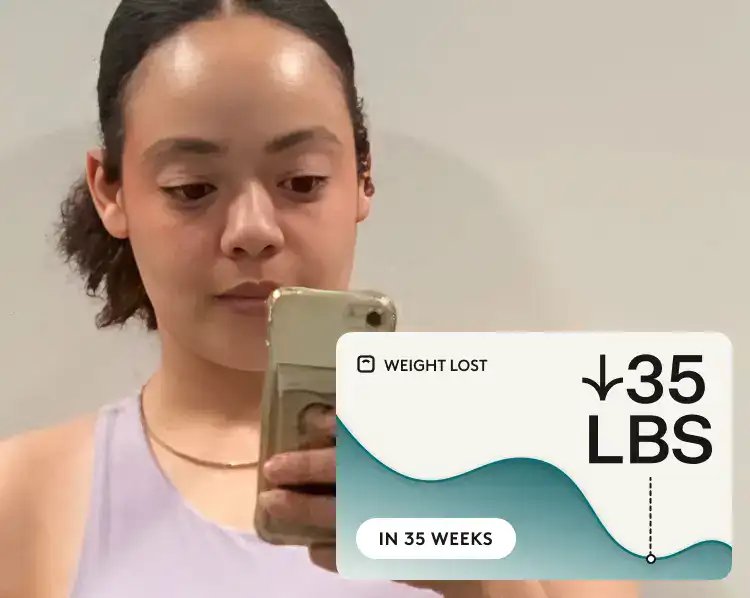



 Meaghan Cameron
Meaghan Cameron
 Noom Team
Noom Team
 Melissa Kay
Melissa Kay


